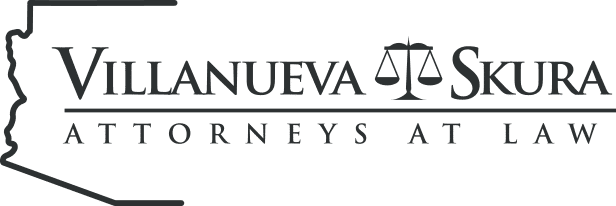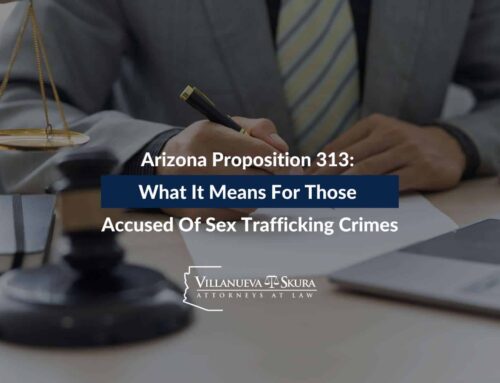Laws & Penalties For Illegal Disclosure Of Explicit Images In Arizona
Understanding The Legal Framework For Protecting Victims Of Image-Based Abuse In Arizona
The digital age has brought many opportunities and conveniences but it has also ushered in new challenges and risks. One such challenge is the unauthorized disclosure of explicit images, a disturbing trend that has profound implications for privacy, trust, and personal well-being.
In response to this growing concern, legislators in Arizona have enacted laws specifically targeting the illegal dissemination of explicit images without consent.
An Arizona criminal defense lawyer will explain below the laws and penalties surrounding the illegal disclosure of explicit images. By understanding the legal framework designed to protect victims and hold perpetrators accountable, we can shed light on this complex issue and promote a safer online environment.

Understanding The Legal Framework Of ARS 13-1425
According to the language outlined in ARS 13-1425, it’s illegal for an individual to intentionally disclose an image of another identifiable person. It applies if the image portrays the person in a state of nudity or engaging in specific sexual activities and if the depicted person has a reasonable expectation of privacy.
Here are some examples that illustrate the illegal disclosure of explicit images:
- Sharing a naked selfie of an ex-girlfriend on social media without her consent.
- Taking intimate photos of a spouse and posting them on an internet platform dedicated to sexual content without their permission.
- Recording images of a neighbor involved in sexual activities and distributing them via email to intentionally cause harm or embarrassment to her.
Arizona law defines the “unlawful disclosure of explicit images” under ARS 13-1425. According to this statute, it is unlawful for a person to intentionally disclose an image of another identifiable person if certain conditions are met. Our criminal defense lawyer emphasizes these conditions:
- The person depicted in the image is shown in a state of nudity or engaged in specific sexual activities.
- The depicted person has a reasonable expectation of privacy regarding the image.
- The disclosure of the image is done with the intent to harm, harass, intimidate, threaten, or coerce the depicted person.
In essence, the law prohibits the intentional and non-consensual dissemination of explicit images of individuals who reasonably expect their privacy to be protected. The intent behind the disclosure must be to cause harm or harassment to the person depicted in the image.
Unveiling The Nuances Of ARS 13-1425: A Deep Dive Into The Prohibited Activities
Under ARS 13-1425, the following activities and offenses are prohibited:
Unauthorized Disclosure
It’s unlawful for a person to intentionally disclose an image of another identifiable person if the depicted person is shown in a state of nudity or engaged in specific sexual activities. The disclosure must be done without the person’s consent and with the intent to harm, harass, intimidate, threaten, or coerce them.
Invasion Of Privacy
The law protects individuals’ reasonable expectations of privacy regarding explicit images. If a person expects that their explicit image will remain private, it’s unlawful for another person to intentionally disclose that image without their consent. In this case, the victim can contact a criminal defense lawyer to start the legal process.
Technology-Based Offenses
The prohibition extends to various digital platforms and means of dissemination. This includes hacking, phishing, or accessing personal devices without consent to obtain and disclose explicit images. Transmitting explicit images through electronic communication, social media, or other digital means is also considered an offense if done without consent and to harm or harass the depicted person.
In summary, the prohibited activities and offenses under ARS 13-1425 encompass the intentional and non-consensual disclosure of explicit images, invasion of privacy, and the use of technology to facilitate these actions without the depicted person’s consent. The intent to harm, harass, intimidate, threaten, or coerce the individual is a key factor in determining the illegality of such activities.
Aggravating Factors & Enhancing The Consequences For More Serious Offenses
The penalties and consequences for violating ARS 13-1425 vary based on the severity of the offense and other factors. Here’s an overview of the potential penalties:
- Misdemeanor Offense: In cases where the violation is considered a class 1 misdemeanor, the maximum penalties may include up to six months in jail and/or a fine of up to $2,500.
- Felony Offense: If the offense is deemed a class 5 felony, the potential consequences can be more severe, especially if the victim works with a trusted criminal defense lawyer. A conviction may result in a prison sentence ranging from six months to two and a half years, along with a fine of up to $150,000.
Factors that can influence the severity of the penalties include the defendant’s criminal history, the extent of harm caused to the depicted person, and any aggravating circumstances present in the case.
Keep in mind that the actual sentencing may vary based on the specific circumstances and the court’s discretion.
In addition to criminal penalties, the victim of unlawful disclosure may also have the right to seek civil remedies. This can include pursuing a civil lawsuit against the offender to seek compensation for damages caused by the disclosure of the explicit image.
Navigating The Complexities Of ARS 13-1425 with Experienced Criminal Defense Attorneys
Although this is a brief guide that you can use to understand the ARS 13-1425, we still encourage you to contact us for more help and guidance. At VS Criminal Defense, we’re always ready to assert your rights. Contact us now to get a no-obligation consultation.
LISTEN TO THE PODCAST VERSION OF THIS ARTICLE

VS CRIMINAL
DEFENSE ATTORNEYS
1845 S Dobson Rd Suite 202
Mesa, AZ 85202
Phone: 480-923-9001
Email: info@vsattorney.com
AZ SEX
CRIMES ATTORNEY
1425 S Higley Rd #101 Unit 2
Gilbert, AZ 85296
Phone: 480-553-9440
Email: info@vsattorney.com
PHOENIX SEX
CRIMES LAWYER
1100 E Washington St Suite 154,
Phoenix, AZ 85034
Phone: 602-805-1212
Email: info@vsattorney.com
ARIZONA FELONY
DEFENSE LAWYER
3919 E Potter Dr
Phoenix, AZ 85050
Phone: 480-933-2329
Email: info@vsattorney.com





